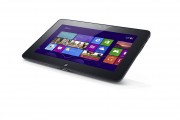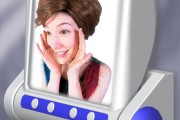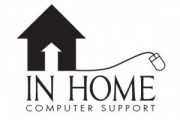‘Lucidtouch’ technology (as they call) has been unveiled by MS in collaboration with Mitsubishi, this technology enables the user to input data into the device by touching either sides of the screen. The major difference between LucidTouch and MultiTouch technologies is that the user can manipulate the data on the screen by touching either sides in the former and only one side in the latter. A small camera hanging on the back of this device helps in analyzing the position of your hands and creating an illusion as if the Screen is Transparent. I Hope This Technology will boost UMPC (ultra mobile Pc) handhelds ability to handle the data to a larger extent.
Acc to engadget
Microsoft, a company that’s been increasingly active in the world of interface research and development, has been dipping its toes further into the multi-touch pool with one of its latest projects: the LucidTouch. The new interface, developed in collaboration with Mitsubishi, adds double-sided touch to a 7-inch, handheld, Surface-esque panel (mysteriously similar to an Apple patent which we saw recently). The new system reveals placement of a user’s hands behind the touch surface through the use of a mounted camera — though future iterations would use surface-based sensors to show the digits — and a touch pad mounted to the back allows interaction with on-screen objects. In addition to the panel itself, the designers have implemented “assistant” UI components that help ease use of the unique hand location, including a dragging system which allows you to “pass off” an object from one finger to another, and a customized keyboard layout that permits touch-typing at the somewhat awkward new angle. One of the areas researchers feel the technology could be implemented is gaming, though we suspect there might be more important applications for this kind of interface… like virtual “dating.” Check the video after the break to see the literal hands-on.
from patrickboudisch
Touch is a compelling input modality for interactive devices; however, touch input on the small screen of a mobile device is problematic because a user’s fingers occlude the graphical elements he wishes to work with. LucidTouch is a mobile device that addresses this limitation by allowing the user to control the application by touching the back of the device. The key to making this usable is what we call pseudo-transparency: by overlaying an image of the user’s hands onto the screen, we create the illusion of the mobile device itself being semitransparent. This pseudo-transparency allows users to accurately acquire targets while not occluding the screen with their fingers and hand. LucidTouch also supports multi-touch input, allowing users to operate the device simultaneously with all 10 fingers. We present initial study results that indicate that many users found touching on the back to be preferable to touching on the front, due to reduced occlusion, higher precision, and the ability to make multi-finger input.


